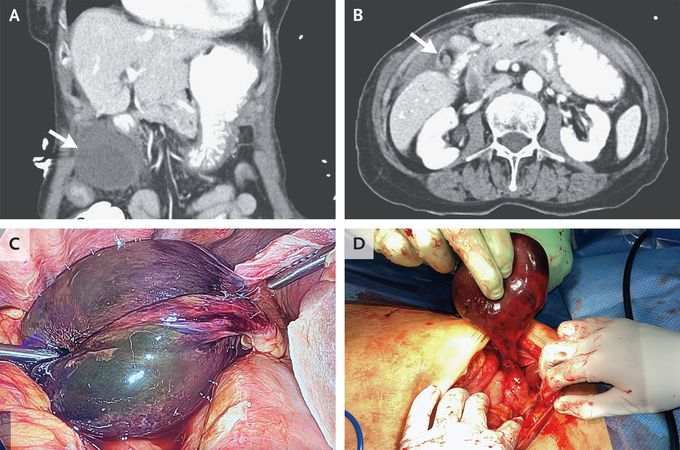


Gallbladder Volvulus
An 86-year-old woman presented to the emergency department with a 1-day history of nausea, vomiting, and pain on the right side of her abdomen. Her vital signs were normal. On physical examination, there was tenderness in the right upper quadrant, with a positive Murphy’s sign and involuntary guarding. The results of laboratory studies were normal. Computed tomography of the abdomen and pelvis revealed a distended gallbladder with a thickened wall outside the gallbladder fossa (Panel A, arrow). There was also swirling of the cystic artery and duct (Panel B, arrow) but no dilatation of the common bile duct. Gallbladder volvulus was suspected, and the patient was taken to the operating room. The diagnosis was confirmed on laparoscopy when a free-floating, necrotic gallbladder was observed encircling the cystic artery and duct (Panel C). The surgery was converted to an open procedure, and detorsion and resection of the gallbladder were successfully performed (Panel D). Gallbladder volvulus occurs when the gallbladder twists along the axis of the cystic artery and duct, compromising blood flow to the organ. Patients present with an acute abdomen, and the cause may be difficult to diagnose preoperatively. This patient did well after surgery and was discharged on postoperative day 2.

